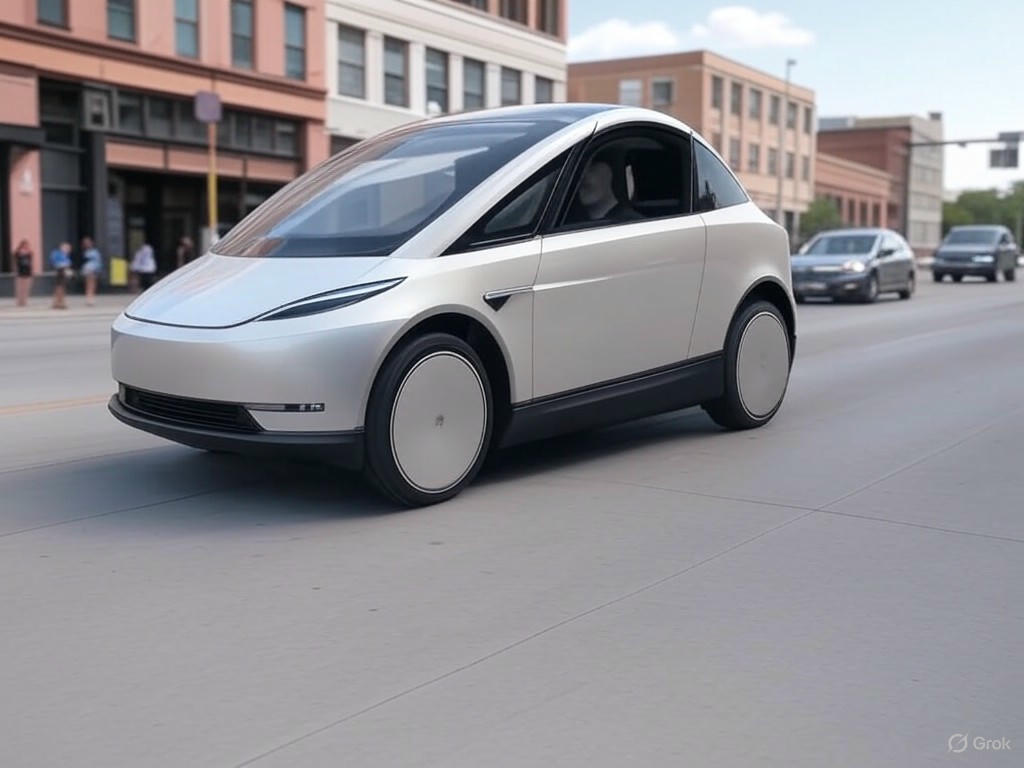Tesla’s Driverless Robotaxi Spotted Cruising Austin: A Glimpse into the Future
In a striking display of technological innovation, a Tesla robotaxi was recently filmed navigating the bustling streets of Austin, Texas, entirely without a human driver. The footage, shared widely on social media and amplified by Tesla’s visionary CEO Elon Musk, has sparked excitement and curiosity about the future of autonomous transportation. This sighting marks a significant milestone in Tesla’s ambitious journey to revolutionize urban mobility with self-driving vehicles, offering a tantalizing preview of what city streets might soon look like.
The video, captured by an onlooker, shows the sleek electric vehicle gliding through traffic, seamlessly responding to road conditions, pedestrians, and traffic signals. Without a driver behind the wheel, the car appeared to operate with a level of precision that hints at the advanced capabilities of Tesla’s Full Self-Driving (FSD) technology. While Tesla has been testing and refining its autonomous systems for years, public sightings like this one underscore how close the company may be to rolling out fully driverless services on a larger scale. Austin, a hub for tech innovation, seems to be a fitting testing ground for such cutting-edge advancements, drawing attention from tech enthusiasts and industry watchers alike.
This development comes amid Tesla’s broader push to dominate the autonomous vehicle market. Elon Musk has long touted the potential of robotaxis as a game-changer, envisioning a future where Tesla owners can turn their cars into revenue-generating assets by joining a shared fleet of driverless taxis. The company’s efforts to perfect its FSD software have faced scrutiny, with concerns over safety and regulatory hurdles. However, each successful public demonstration, like the one in Austin, builds confidence in the technology’s readiness. Industry experts suggest that Tesla’s approach—relying on cameras and AI rather than expensive LIDAR systems—could give it a cost advantage over competitors like Waymo and Cruise, who are also racing to deploy autonomous fleets.
Beyond the technological marvel, the sighting raises important questions about the societal impact of driverless cars. How will cities adapt to fleets of autonomous vehicles? What does this mean for traditional taxi drivers and ride-sharing gig workers? While the promise of reduced traffic accidents and lower transportation costs is enticing, the transition to a driverless future will require careful navigation of ethical, legal, and economic challenges. Tesla’s progress in Austin could serve as a blueprint for other cities, providing valuable data on how these vehicles interact with complex urban environments.
As the video of the Tesla robotaxi continues to circulate online, it’s clear that we’re witnessing the early stages of a transportation revolution. While full deployment of driverless fleets may still be a few years away, each sighting brings us closer to a world where hopping into a car without a driver is as commonplace as ordering a ride on an app. For now, Austin’s streets have given us a glimpse of tomorrow, and the world is watching Tesla to see what’s next.


